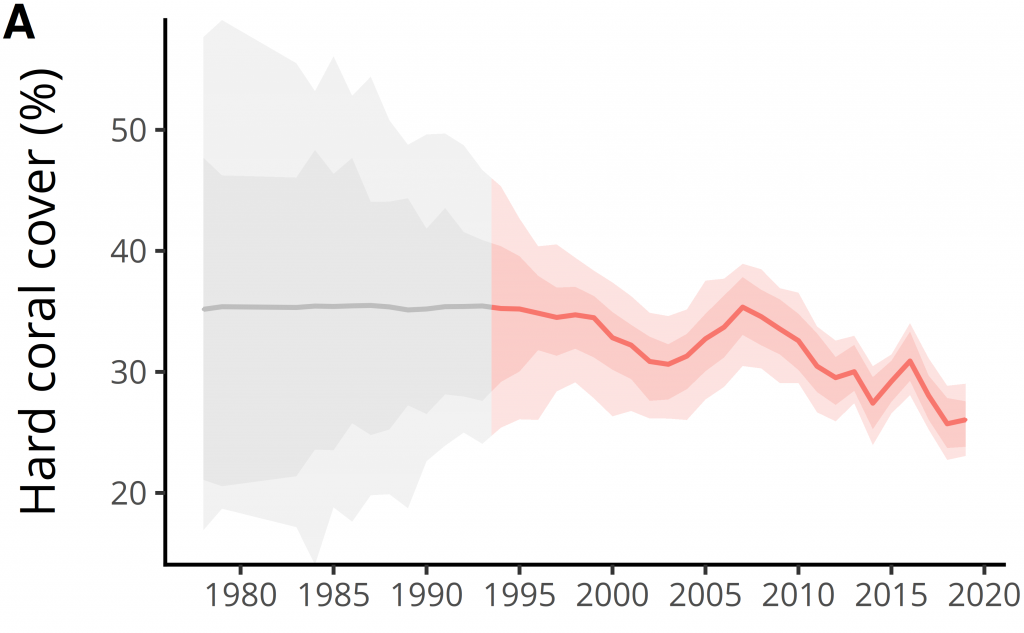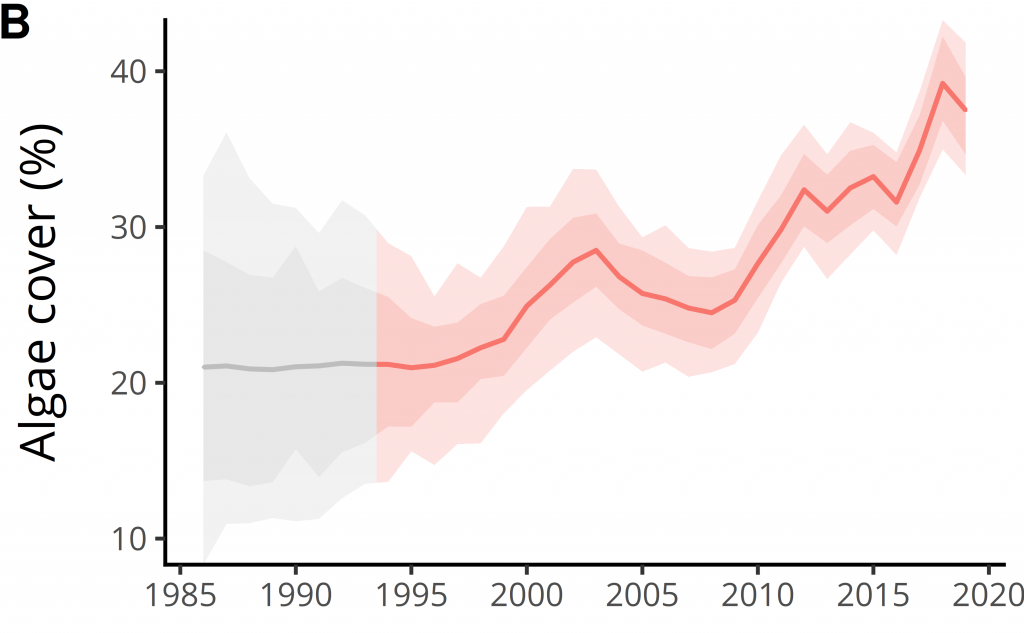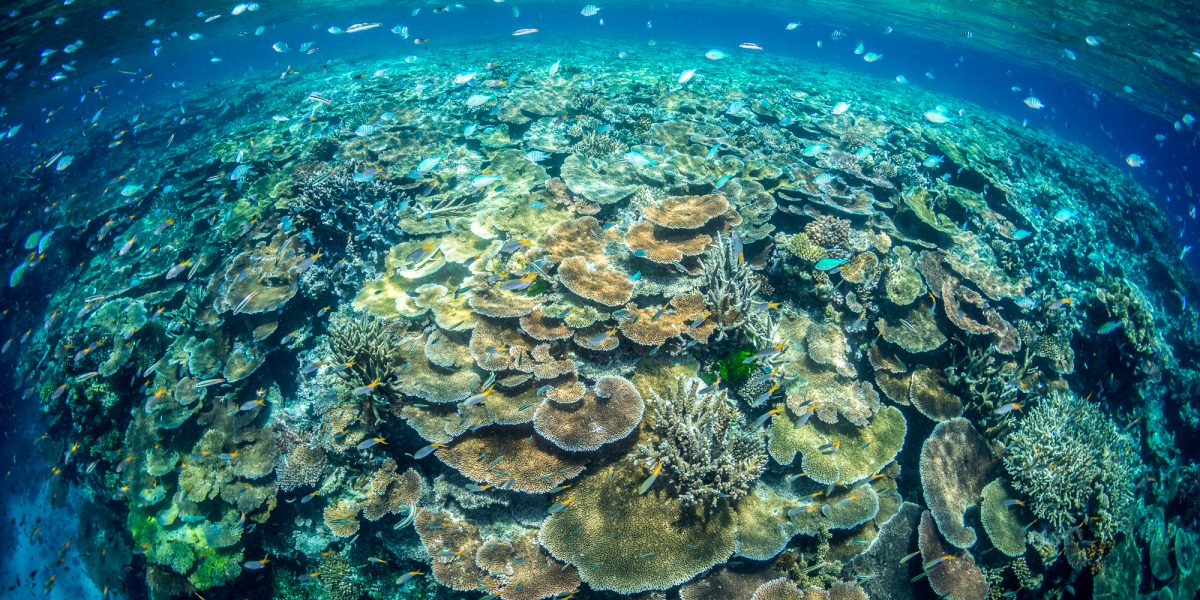Australia
Britta Schaffelke
Global Coordinator, GCRMN / Australian Institute of Marine Science
Amanda Brigdale
Australian Institute of Marine Science
The GCRMN Australia region supports about 16% (41,802 km2) of the world’s coral reefs. Among them is the iconic Great Barrier Reef (GBR), which is the single largest reef complex on the planet, comprising almost 3000 individual reefs and extending more than 2300 km along the Queensland coast, and the world’s longest fringing reef, Ningaloo Reef in Western Australia. Coral reefs occur in all of Australia’s northern tropical waters and exist as far south as Lord Howe Island (31oS) off the east coast and the Houtman Abrolhos Islands (29oS) off the coast of Western Australia. Australia’s coral reefs are highly diverse ecosystems, supporting more than 400 species of hard coral, and exhibiting a variety of forms including fringing reefs, particularly along coasts of Western Australia, Queensland and offshore continental islands such as Christmas Island, Lord Howe Island and those within the GBR, mid-shelf platform reefs, offshore atolls and submerged shoals.
Coral reefs, particularly the GBR, are part of Australia’s national identity, and have been central to the rich culture of Australia’s coastal Aboriginal and Torres Strait Islander peoples for millennia. Australia’s coral reefs are economically important. The GBR alone contributes an estimated $6.4 billion per annum to Australia’s economy and supports 64,000 jobs in the reef-based tourism, fisheries, recreation and research sectors.
Monitoring of coral reefs in Australia was haphazard until the establishment of the Australian Institute of Marine Science Long-term Monitoring Program (AIMS LTMP)4 in 1985, which, at the time, was primarily concerned with assessing the size and impacts of populations of crown-of-thorns starfish on the GBR using the manta tow method. The AIMS LTMP has since evolved to provide a rigorous assessment of the overall health of the GBR and to measure the effectiveness of management interventions particularly spatial management (zoning) arrangements on the GBR. Monitoring of coral reefs in Western Australia has been focussed on specific reefs and is conducted by a range of agencies and organisations. The longest running monitoring program in Western Australia began in 1991 and is focussed on Ningaloo Reef5. Monitoring at Scott Reef and Rowley Shoals commenced in 1994/95 and around the Cocos-Keeling and Christmas Islands began in 1998 and 2005 respectively5. However, monitoring in many parts of Western Australia is still sporadic, with gaps of two or more years between opportunistic surveys.
(i) Marine Ecoregions of the World (MEOW) is a biogeographic classification of the world’s coasts and shelves (Spalding et al., 2007).



An operational network of:
![]() The International Coral Reef Initiative (ICRI) is a proactive partnership between Nations and organisations which strives to preserve coral reefs and related ecosystems around the world. GCRMN is an operational network of ICRI, acting as one of its implementing arms.
The International Coral Reef Initiative (ICRI) is a proactive partnership between Nations and organisations which strives to preserve coral reefs and related ecosystems around the world. GCRMN is an operational network of ICRI, acting as one of its implementing arms.
The International Coral Reef Initiative (ICRI) is a proactive partnership between Nations and organisations which strives to preserve coral reefs and related ecosystems around the world. GCRMN is an operational network of ICRI, acting as one of its implementing arms.
Global Coral Reef Monitoring Network (GCRMN) | © 2022 All rights reserved | Powered by piknetart